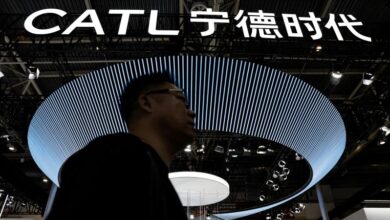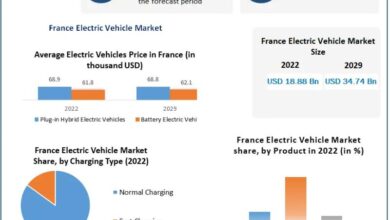Why America And The EU Slammed The Brakes On Chinese EVs? – OpEd – Eurasia Review

The electric vehicle (EV) market is poised for explosive growth, with China leading the charge in production and sales. However, this dominance has hit a roadblock in the form of heavy duties imposed by the United States and the European Union (EU) on Chinese-made EVs. This unexpected turn of events raises critical questions: Why are the US and EU taking such drastic measures and what are the potential consequences?
Unfair Advantage: The Subsidy Argument
At the heart of the issue lie accusations of unfair competition. Both the US and EU allege that Chinese EV manufacturers benefit from substantial government subsidies. These subsidies can take various forms, including:
• Direct financial assistance: Chinese authorities provide direct cash injections to EV companies, lowering production costs and allowing them to offer more competitive pricing in foreign markets.
• Subsidized raw materials: China heavily subsidizes the mining and processing of lithium and other critical battery components, further reducing production costs for Chinese EV makers.
• Research and development (R&D) support: Generous government funding for EV R&D allows Chinese companies to innovate rapidly and potentially gain a technological edge.
The US and EU argue that these subsidies create an uneven playing field, undercutting domestic EV industries struggling to gain a foothold. European Commission Executive Vice-President Margrethe Vestager stated that Chinese EVs were “subsidized from mine to EU harbor,” giving them an unfair advantage. The US echoed this sentiment, with President Biden citing the “threat of economic injury” to American EV producers.
Protecting Domestic Dreams: The Rise of National Champions
Beyond economic concerns, there’s a strategic dimension to the tariff wars. Both the US and EU are aiming to nurture their own EV industries and become global leaders in the clean transportation revolution. By shielding domestic companies from cheaper Chinese competition, they hope to create an environment conducive to growth and innovation. This ambition aligns with broader industrial policy goals to create jobs, promote technological advancement, and ensure future competitiveness in the EV sector.
The US, for instance, has ambitious plans to electrify its transportation sector and is heavily invested in building a robust domestic EV supply chain. The EU, too, has outlined its “Green Deal” strategy, aiming for carbon neutrality by 2050. A thriving domestic EV industry is crucial to achieving these goals.
The Fallout: A Tangled Web of Consequences
The imposition of tariffs is a complex move with far-reaching consequences. Here’s a breakdown of some key potential impacts:
• Higher Prices for Consumers: Tariffs will likely translate to higher prices for consumers in the US and EU. This could dampen consumer enthusiasm for EVs, hindering the overall growth of the market.
• Disrupted Supply Chains: China is a dominant player in the EV battery supply chain. A full-blown trade war could disrupt supply chains for EVs, which often rely on components from various countries. This could lead to production slowdowns and price hikes for consumers globally. Ultimately, such a conflict could hinder the global transition to electric vehicles, a technology crucial for reducing greenhouse gas emissions.
• Escalating Tensions: The trade war could exacerbate existing political and economic tensions between the US, EU, and China. This could lead to retaliatory tariffs and further strain global trade relations.
• Innovation Chill: A stifled market with limited competition could hinder innovation in the EV sector. Without the pressure to compete with lower-cost Chinese alternatives, domestic EV companies might be less incentivized to push boundaries in terms of technology and cost-efficiency.
• A Trade War on Wheels? The imposition of heavy duties by both the US and EU has sparked fears of a trade war focused on electric vehicles. Chinese retaliation is a real possibility. Beijing has threatened to retaliate with countervailing tariffs on imports from both the US and EU. These could target a range of sectors potentially including agriculture, aviation and luxury goods. This tit-for-tat approach could escalate tensions and disrupt trade relations between these major economic powers.
The Road Ahead: Cooperation or Collision?
The future of the EV trade war remains uncertain. Both the US and EU have expressed a willingness to negotiate with China to resolve the subsidy issue. However, finding a mutually agreeable solution will be challenging. China vehemently denies any wrongdoing and views the tariffs as protectionist measures.
There are alternative paths forward. The US, EU, and China could explore collaborative efforts to establish fair trade practices and set global standards for EV production subsidies. This would create a level playing field and foster healthy competition ultimately benefiting consumers and accelerating the transition to clean transportation.
Conclusion: A Crossroads for the EV Revolution
The US and EU’s decision to impose heavy duties on Chinese EVs marks a significant shift in the global EV landscape. While the stated goal is to protect domestic industries, this move comes with significant risks. The potential for higher prices, supply chain disruptions, and a stifled innovation environment could ultimately hinder the very progress these measures aim to safeguard.
The coming months will be crucial in determining the trajectory of this trade war. Cooperation and a commitment to fair trade practices offer the best hope for a win-win scenario that benefits both consumers and the global EV revolution.



